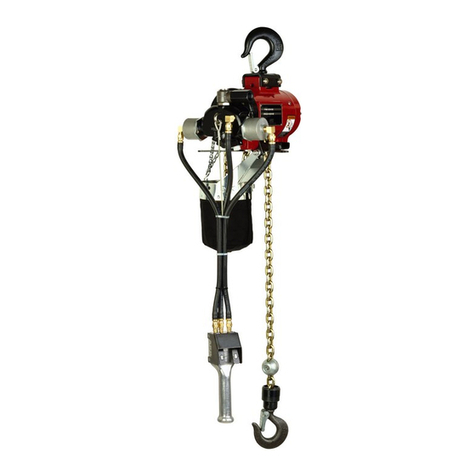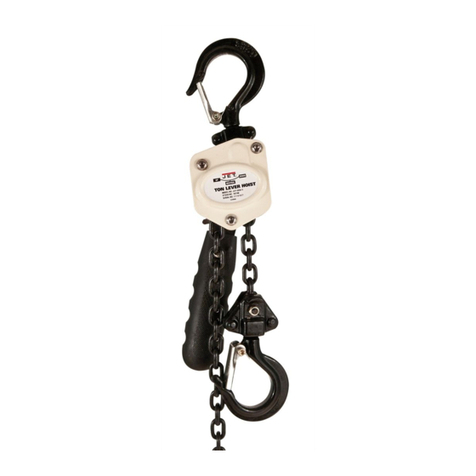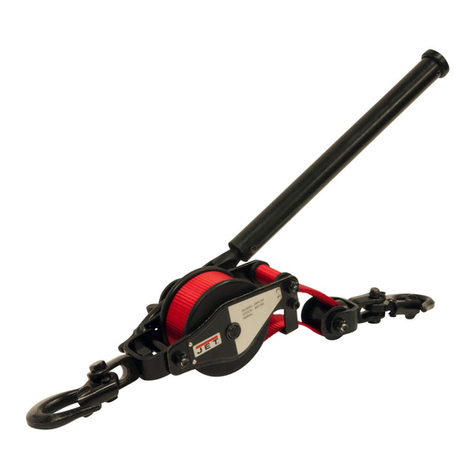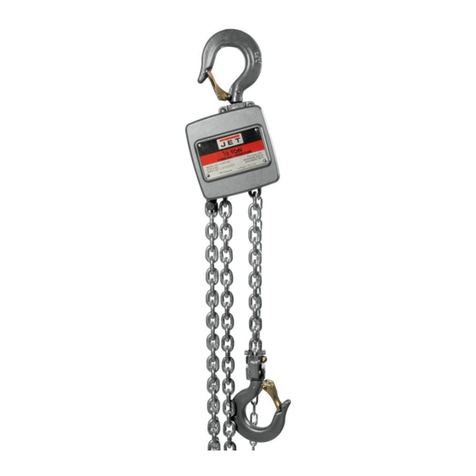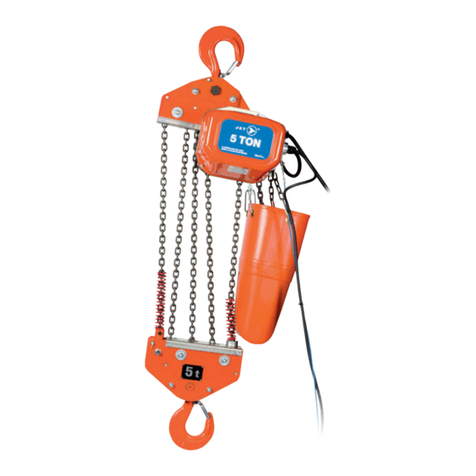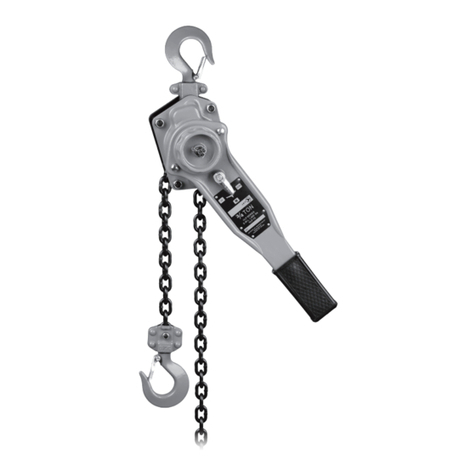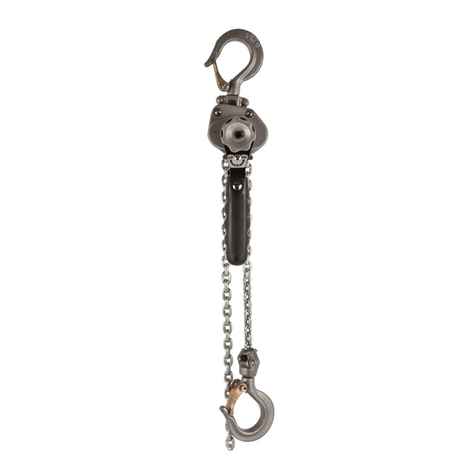
2
TABLE OF CONTENTS
Waranty Policy............................................................... 2
Information for your safety............................................ 3
Safety precautions ........................................................ 3
Specifications................................................................ 4
Unpacking, installation, pre-operation inspection ...... 5
Operation....................................................................... 6
Precautions.................................................................... 7
Inspection and maintenance ........................................ 8
Hooks............................................................................. 9
Chain.............................................................................10
Parts breakdown .................................................... 11, 12
WARRANTY POLICY
JET EQUIPMENT AND TOOLS LTD.
(JET®) makes every effort to ensure
its products are manufactured to the
highest standards and are guaranteed
against defects in materials and
workmanship when the product is
used for the purpose for which it was
designed.
This guarantee applies only to JET
products purchased new from a JET
authorized distributor.
JET product warranties are extended
to the original retail purchaser only.
This warranty does not apply to any
product showing signs of abuse,
misuse, alteration, or having been
improperly maintained or repaired.
This warranty does not cover
damage attributable to normal wear
and tear.
Any JET product that fails during
normal use and is within the
specified warranty period for that
product will be repaired or replaced
at JET’s discretion. Repairs and/
or replacements are warranted as
described for the specific product and
only for the remainder of the original
warranty period.
Repair or replacement is the
exclusive remedy for defective product
under this warranty.
Warranty is expressly in lieu of
all other warranties, including the
implied warranty of merchantability or
any implied warranty of fitness for a
particular application.
Any JET product for which there is
a warranty claim should be returned
PREPAID to an authorized JET
distributor or service centre. Authorized
Warranty Depots are found at
surewerx.com
ALL warranty claims must be
accompanied by proof of purchase and
an explanation of the defect or failure.
It is the customer’s responsibility to
provide this information.
JET shall not be held liable for any
consequential or incidental damages
for breach of any expressed or implied
warranty on their products. No claims
for damages of any type will be
considered and all products are sold
with this understanding.
Any costs incurred to obtain warranty
consideration or services are the
Customer’s responsibility including
shipping and handling, travel, lost time,
or lost production.
SPECIFIED WARRANTY –
MATERIAL HANDLING
1 Year Limited Warranty
Chain Hoists Hand Cable Pullers
Air Hoists Lever Chain Pullers
Electric Hoists Grip Pullers
Electric Trolleys Manual Adjustable
Trolleys
Drum Clamps Beam Clamps
Plate Clamps Blocks and Sheaves
Pallet Trucks Mobile Lift Tables
Winches
GENERAL INFORMATION ON JET CHAIN HOISTS AND PULLERS
Customs Lifts – Custom lift lengths are
available, however, custom lift hoists
and pullers are NOT returnable.
CAUTION: be sure that supporting
structures and load-attaching devices
used in conjunction with hoists,
provide an adequate safety factor to
handle the rated load plus the weight
of the equipment. If in doubt, consult a
qualified structural engineer.
This equipment is not to be used for
lifting, supporting, or transporting
people, or lifting, supporting, or
transporting loads over people.
IMPORTANT: Before installation
and operation, see maintenance and
operations manual for additional
warnings, precautions and operating
instructions.
NOTE: Batteries supplied with certain
products may have been subjected to
long shelf life, resulting in low energy
or a dead battery. Please source
replacement batteries locally. Please
follow instructions in the manuals for
products using rechargeable batteries.
Dead batteries do not constitute a
warranty claim.

















